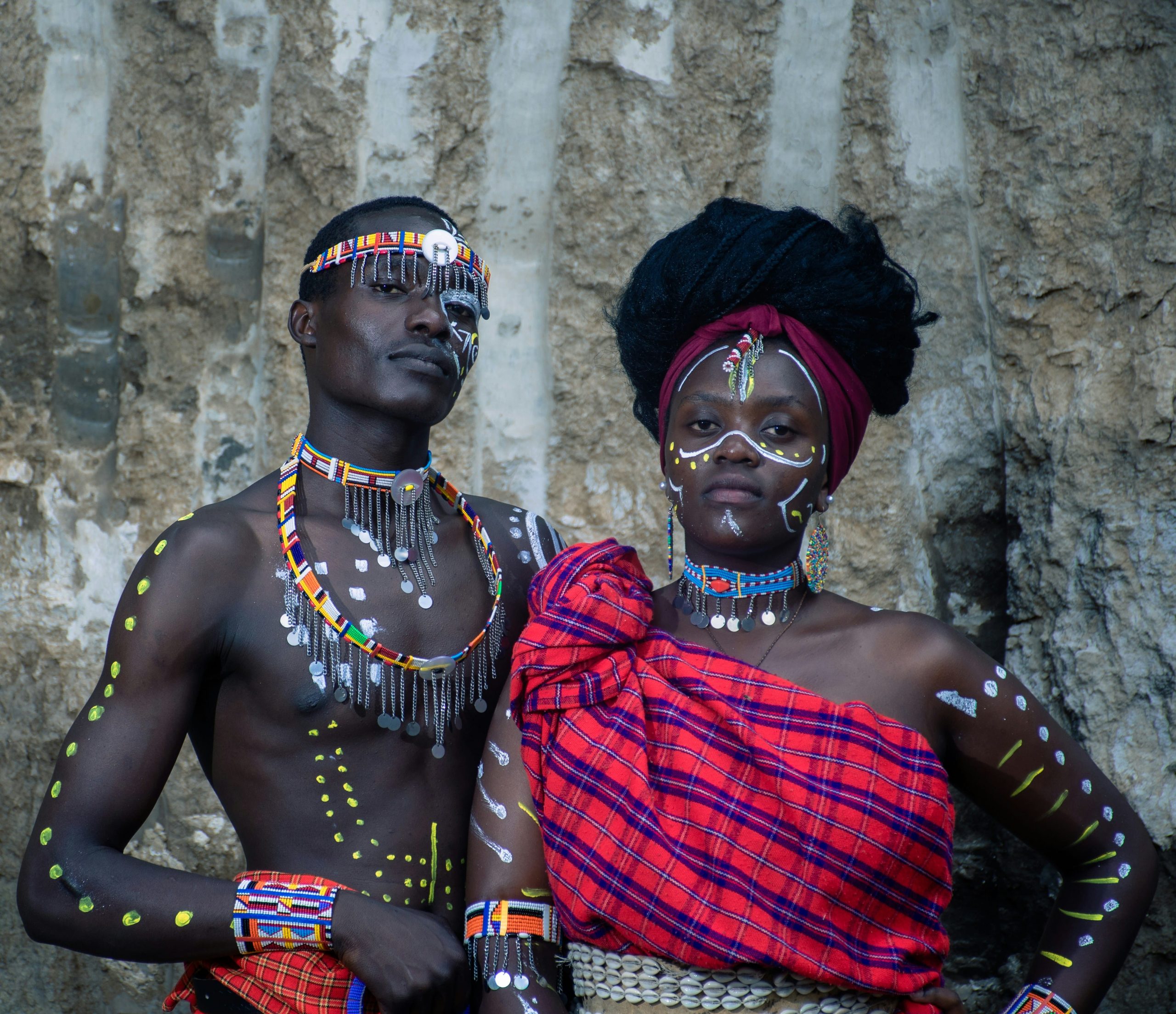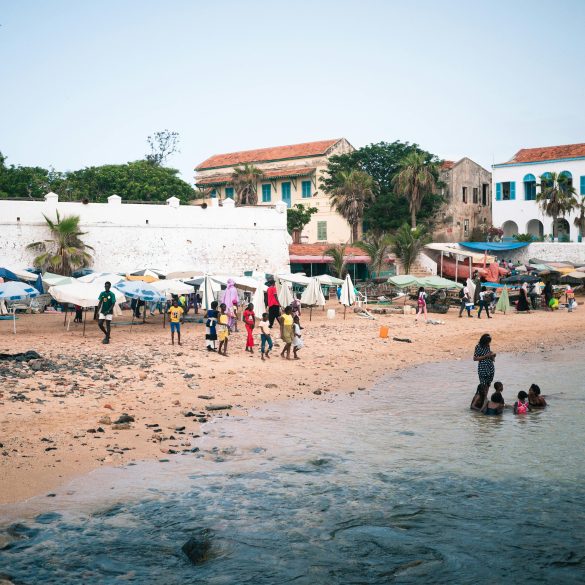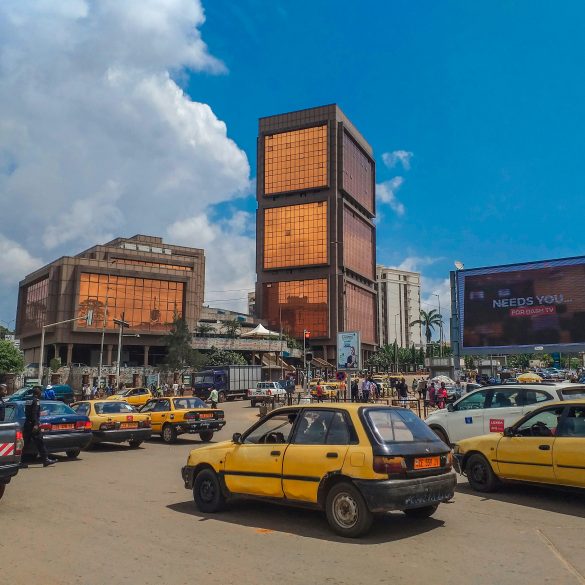قبائل وادي أومو: الثقافة وفنون الجسد والعادات
عندما مشيت في وادي أومو لأول مرة، أتذكر شعوري وكأنني دخلتُ بوابةً إلى تاريخ البشرية الحي. هنا، في براري جنوب إثيوبيا النائية، تحافظ عشرات القبائل الأصلية على عادات ثقافية تمتد لآلاف السنين - ممارسات يبدو الحفاظ عليها مستحيلاً في عالمنا المترابط. ومع ذلك، فهي، بطريقة ما، باقية.
يمثل وادي أومو أحد أكثر مناطق أفريقيا تنوعًا ثقافيًا، حيث يقطنه حوالي 200 ألف شخص ينتمون إلى أكثر من 16 مجموعة عرقية مميزة1إن ما يذهلني أكثر ليس فقط المشهد البصري لفنون الجسد المعقدة والملابس الاحتفالية، بل الأهمية الأعمق التي تحملها هذه التقاليد للمجتمعات التي تتنقل بين الحكمة القديمة والضغوط الحديثة.
التراث الثقافي الإثيوبي
تعترف إثيوبيا بأكثر من 80 مجموعة عرقية مميزة، وتمثل قبائل وادي أومو بعضًا من أكثر المجتمعات الأصلية تماسكًا ثقافيًا في البلاد. وقد أُدرجت المنطقة ضمن قائمة اليونسكو للتراث العالمي عام 1980 لأهميتها في علم الحفريات وتراثها الثقافي الحي.
لقد أمضيتُ وقتًا طويلًا في البحث ومراقبة هذه المجتمعات، وبصراحة، تُعلّمني كل زيارة شيئًا جديدًا عن قدرة الإنسان على التكيف والمرونة الثقافية. لقد طورت قبائل وادي أومو - بما في ذلك شعوب هامار، ومورسي، وكارو، وسورما، وداسانيش - أنظمة اجتماعية متطورة، وتقاليد فنية، واستراتيجيات بقاء تتكيف تمامًا مع بيئتها القاسية.
ما يُذهلني، كمراقب وباحث، هو كيفية حفاظ هذه المجتمعات على هوياتها المتميزة، مع تقاسمها تجارب إنسانية عالمية. تتخذ مراسم الزواج، وطقوس بلوغ سن الرشد، والمعتقدات الروحية، والتعبير الفني أشكالًا مختلفة اختلافًا جذريًا بين القبائل، إلا أنها تُحقق أهدافًا جوهرية متشابهة في بناء التماسك المجتمعي والهوية الفردية.
ممارسات فن الجسد وحدها - بدءًا من الندبات المعقدة وصولًا إلى صفائح الشفاه المتقنة ورسومات الجسد الملونة - تُمثل أنظمة تواصل معقدة. هذه ليست مجرد خيارات زخرفية، بل تعبيرات ذات مغزى عن المكانة الاجتماعية، والمعتقدات الروحية، والانتماء القبلي، والهوية الشخصية. أتذكر مشاهدة امرأة من الكارو تُجهّز لحفل، تقضي ساعات في رسم أنماط طباشيرية بيضاء تروي قصة نسب عائلتها وإنجازاتها الشخصية.
ومع ذلك، عليّ أن أتناول مسألةً أزعجتني خلال بحثي المبكر: ميل الغرباء إلى اعتبار هذه الثقافات ظواهرَ غريبةً، لا مجتمعاتٍ متطورةً لها تحدياتها وتطلعاتها وقدراتها الذاتية. تواجه هذه المجتمعات ضغوطًا حقيقيةً ناجمةً عن التحديث وتغير المناخ والتنمية الاقتصادية، مما يهدد أساليب حياتها التقليدية.
القبائل الكبرى وأراضيها الفريدة
التنوع بين قبائل وادي أومو يُدهشني دائمًا. فقد طورت كل مجموعة ممارسات ثقافية مميزة تتناسب تمامًا مع بيئتها الخاصة وتجاربها التاريخية. دعوني أستعرض معكم القبائل الرئيسية التي حظيت بشرف التعرف عليها، لأن فهم اختلافاتها يُساعدنا على تقدير القدرة البشرية المذهلة على التكيف الثقافي.
| قبيلة | سكان | الموقع الأساسي | الممارسات البارزة |
|---|---|---|---|
| هامار | 46,000 | وادي أومو الشرقي | احتفالات القفز فوق الثيران، تسريحات الشعر المعقدة |
| مرسي | 11,500 | منطقة منتزه ماجو الوطني | صفائح الشفاه، قتال العصا |
| كارو | 2,500 | ضفاف نهر أومو | رسم الجسم، الندب |
| سورما | 35,000 | المرتفعات الغربية | صفائح الشفاه، تربية الماشية |
لقد لفت شعب هامار انتباهي بشكل خاص خلال بحثي. لقد طوروا واحدًا من أكثر التسلسلات الهرمية الاجتماعية تعقيدًا التي واجهتها، والتي تتمحور حول أنظمة قائمة على العمر وملكية الماشية.2ما أدهشني حقًا هو كيف أن حفل القفز فوق الثيران الشهير ليس مجرد طقوس للعبور - بل هو آلية اجتماعية كاملة تحدد أهلية الزواج والوضع الاقتصادي والمسؤولية المجتمعية.
أتذكر حديثي مع أحد شيوخ هامار الذي شرح لي كيف يربط هذا الاحتفال الشباب بأسلافهم ومجتمعهم وأدوارهم المستقبلية كأزواج وآباء. يمثل الركض على ظهور الثيران قفزاتٍ مجازية نحو البلوغ، لكن أسابيع التحضير تتضمن تعلم الأغاني التقليدية، وفهم الأنساب، وإتقان المعارف الثقافية التي سترشدهم طوال حياتهم.
رؤية ثقافية
على الرغم من كون شعب الكارو أصغر قبيلة، إذ لا يتجاوز عدد أفرادها 2500 نسمة، إلا أنهم طوروا أرقى تقاليد الرسم على الجسد في الوادي. وغالبًا ما تتضمن تعبيراتهم الفنية عناصر معاصرة مع الحفاظ على الرمزية التقليدية، وهو مثال رائع على التكيف الثقافي دون التخلي عن القيم الجوهرية.
يُبهرني شعب مرسي لأسباب مختلفة تمامًا. فارتداءهم لصفائح الشفاه - والتي، بصراحة، بدت في البداية صادمة لحساسيتي الغربية - يُمثل في الواقع أحد أكثر أنظمة تمكين المرأة ومعايير الجمال تعقيدًا التي درستها. يرتبط حجم صفيحة الشفاه لدى المرأة تقليديًا بثروة عائلتها ومكانتها الاجتماعية.3.
لكن ما غيّر وجهة نظري حقًا هو أن العديد من نساء المورسي يختارن عدم ارتداء صفائح الشفاه اليوم، وهو خيار يحظى بالاحترام في مجتمعاتهن. وتستمر هذه الممارسة بين من يُقدّرون هذا التقليد، بينما يتكيف آخرون مع الظروف المتغيرة. تُشكّل هذه المرونة تحديًا للصور النمطية عن الثقافات "البدائية" بأنها جامدة أو ثابتة.
- تشير التنانير الجلدية المعقدة التي ترتديها نساء هامار والمزينة بأصداف الكاوري إلى الحالة الاجتماعية وثروة الأسرة
- يستخدم رجال الكارو الطباشير الأبيض والأحمر المغرة والفحم لإنشاء لوحات جسدية تحكي قصصًا شخصية
- تمارس مجتمعات سورما مسابقات قتال العصي المعقدة التي تخدم أغراض الترفيه وحل النزاعات
- لقد طور شعب داسانيش تقنيات متطورة لإدارة الفيضانات للزراعة على طول نهر أومو
شعب سورما، الذي يسكن المناطق الجبلية، طوّر ممارساته الثقافية لتتلاءم مع بيئات المرتفعات بطرقٍ تُدهشني باستمرار. علاقتهم بالماشية ليست اقتصادية فحسب، بل هي روحية واجتماعية عميقة. تظهر أسماء الماشية وألوانها وخصائصها في أشعارهم وأغانيهم وأسمائهم الشخصية، مما يخلق بيئة ثقافية تتداخل فيها الهويات البشرية والحيوانية بطرقٍ آسرة.

فن الجسد المقدس والديكور الاحتفالي
تُمثل تقاليد فن الجسد في وادي أومو بعضًا من أكثر أنظمة التواصل غير المكتوبة تطورًا التي صادفتها في حياتي. كل ندبة، كل تصميم مرسوم، كل قطعة مجوهرات تروي قصة - ليس فقط عن الهوية الفردية، بل عن الانتماء إلى المجتمع، والمعتقدات الروحية، والعلاقات الاجتماعية التي قد تمتد لأجيال.
ما جذبني في البداية لدراسة هذه الممارسات هو تنوعها المذهل، لكن ما يُبقيني مفتونًا هو معناها الأعمق. لقد تعلمتُ أن تجاهل هذه التقاليد باعتبارها مجرد زينة "بدائية" يُغفل دورها كتقنيات اجتماعية معقدة تحافظ على تماسك المجتمع، وتنقل المعرفة الثقافية، وتُزود الأفراد بأدوات قوية للتعبير عن أنفسهم.
تُثير ممارسات الندب اهتمامي بشكل خاص لأنها تتطلب التزامًا وتخطيطًا دقيقين. بين شعب الكارو، يخضع الشباب لندبات مُعقدة على صدورهم وأذرعهم، دلالةً على شجاعتهم واستعدادهم لمسؤولياتهم كبالغين.4يمكن أن تستغرق العملية عدة أشهر حتى تكتمل، حيث تعتمد كل جلسة على العمل السابق لإنشاء أنماط بارزة معقدة.
أتذكر أنني شاهدت شابًا من الكارو يُذبح، محاطًا بأقاربه الذكور الذين أنشدوا الأغاني التقليدية وقدّموا التشجيع. لم يكن الاحتفال لتحمّل الألم، بل لإظهار الالتزام بالقيم الثقافية وقبول توجيهات الشيوخ الذين مرّوا بنفس التحوّل قبل عقود.
تُقدّم ممارسات الرسم المؤقت على الجسم رؤىً مُختلفة للتعبير الثقافي. تستخدم مجتمعات الكارو الطباشير الأبيض والمغرة الحمراء والفحم لابتكار تصاميم مُتقنة للاحتفالات والتفاعلات الاجتماعية اليومية. ما يُلفت انتباهي هو كيفية تغير هذه اللوحات باختلاف السياق - فتصاميم الجنازات تختلف عن أنماط الاحتفالات، والتي بدورها تختلف عن العلامات الاجتماعية اليومية.
- غالبًا ما تمثل أنماط الطباشير البيضاء الحماية الروحية والاتصال بالأسلاف
- تشير تصميمات المغرة الحمراء عادةً إلى الاحتفال والخصوبة وقوة الحياة
- غالبًا ما ترمز علامات الفحم إلى القوة والقدرة على التحمل والمسؤوليات البالغة
- الأنماط المدمجة تخلق سرديات معقدة حول الهوية الفردية والمجتمعية
تستحق تقاليد طلاء الشفاه لدى نساء مورسي وسورما نقاشًا دقيقًا ومحترمًا، نظرًا لسوء فهمها من قِبل الغرباء. لا تتعلق هذه الممارسات بالتوافق مع توقعات الرجال أو اتباع التقاليد الجامدة، بل تتعلق بحرية المرأة في اختياراتها، ومعايير الجمال التي تحددها النساء بأنفسهن، والمشاركة في النظم الاقتصادية التي توفر الاستقلال والاحترام.5.
لقد تعلمتُ أن عملية صنع وارتداء لوحات الشفاه تتطلب تدريبًا مكثفًا في المعرفة الثقافية والمهارات الاقتصادية والعلاقات الاجتماعية. تتعلم الشابات الأغاني التقليدية، ويتقنّ تقنيات الفخار، ويفهمن الأنساب، ويكتسبن الثقة اللازمة للتحدث أمام الجمهور وقيادة المجتمع. تُصبح لوحة الشفاه رمزًا لهذا التعليم الشامل.
التكيفات الحديثة
يجد العديد من الشباب في مجتمعات وادي أومو طرقًا مبتكرة لتكريم فنون الجسد التقليدية مع التكيف مع الظروف المعاصرة. يستخدم البعض زخارف مؤقتة للمناسبات الخاصة أثناء سعيهم للحصول على تعليم أو وظيفة تتطلب معايير مظهرية مختلفة.
تُكمّل تقاليد المجوهرات والملابس تعديلات الجسم في خلق دلالات ثقافية متكاملة. ملابس نساء هامار الجلدية المزينة بأصداف الكاوري والحلي المعدنية والخرز الزجاجي لا تُشير فقط إلى الثروة الشخصية، بل إلى التحالفات العائلية والعلاقات التجارية والروابط الإقليمية التي قد تمتد عبر مجموعات عرقية متعددة.
ما يُثير إعجابي حقًا هو كيفية موازنة هذه المجتمعات بين التعبير الفردي والاستمرارية الثقافية. لا يُجبر الشباب على تبني الممارسات التقليدية، بل يُثقَّفون بمعانيها وأهميتها. يختار بعضهم المشاركة الكاملة، بينما يختار آخرون التكيف الانتقائي، ويشقّ بعضهم مسارات جديدة تمامًا مع الحفاظ على الروابط الثقافية من خلال وسائل أخرى.
تكشف الجوانب الاحتفالية لفن الجسد عن فهمٍ متعمق لعلم النفس، والديناميكيات الاجتماعية، والمعتقدات الروحية. قد يستغرق التحضير للاحتفالات الكبرى أسابيع، حيث يتعاون أفراد المجتمع في وضع التصاميم، ومشاركة المواد، وتقنيات التدريس التي تضمن نقل المعرفة الثقافية إلى الأجيال الشابة.



